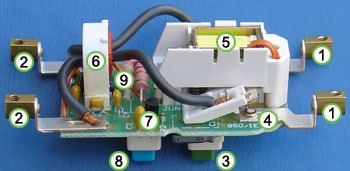Double pole RCD module sitting in a standalone 2 way enclosure. Live on the left, neutral on the right. Supply connected to the bottom, load connected to the top.
But can it be connected supply to the top, load to the bottom? Once it's tripped, load is disconnected in either configuration. Or am I missing something?
But can it be connected supply to the top, load to the bottom? Once it's tripped, load is disconnected in either configuration. Or am I missing something?


